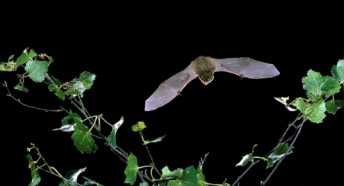Listening out for the dawn chorus
Listening to the dawn chorus – nature’s free concert – lifts our spirits, providing those little bursts of happiness that we all need.
Fortunately most of us can benefit from hearing birdsong, even in urban areas, by just opening a window. Here are just some of the birds you’re likely to hear.
Blackbird
Common blackbird by Marc Anderson.
This is usually the first bird you’ll hear singing in the morning. That’s because it has larger eyes than many of our other feathered songsters, so it can be up and about even in low light.
The blackbird has a loud, flutey melodic warble which it usually broadcasts from the tops of trees or buildings. The male is black with a bright orange beak and the female is chocolate brown.
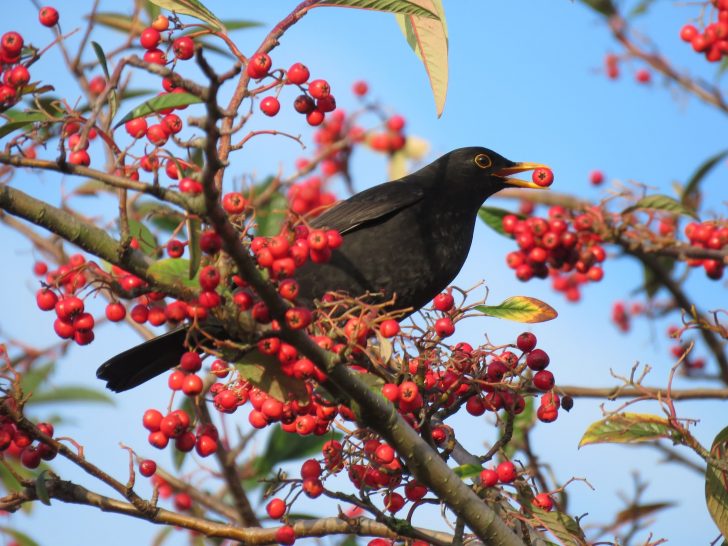
Robin
European robin by Paul Holt.
Robins sing all year round – even at night! Their cheerful red breasts, sweet refrain and trusting nature have often seen them voted Britain’s favourite bird.
If you’ve been gardening during the lockdown you might have found you have robins for company, hopping after you in the hope that your digging will unearth some tasty morsels.
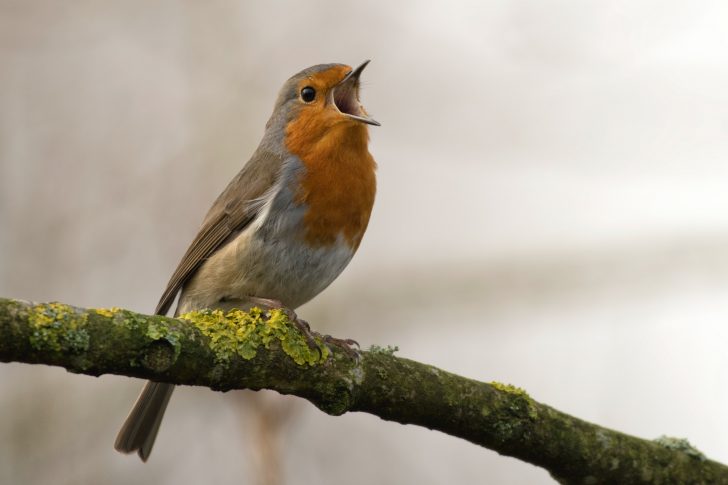
Collared dove
Eurasian collared dove by Richard Dunn.
This pretty dove is a relative newcomer to the UK, only starting to nest here in the 1950s after spreading across Europe from the Middle East. You may spot their display flights overhead, with the bird flapping to gain height before gliding downwards.
The nature writer Simon Barnes likens the three-note call of the collared dove to a bored football fan chanting ‘United, United’. Collared doves are a pale grey colour, and get their name from the black ‘collar’ mark around their necks.
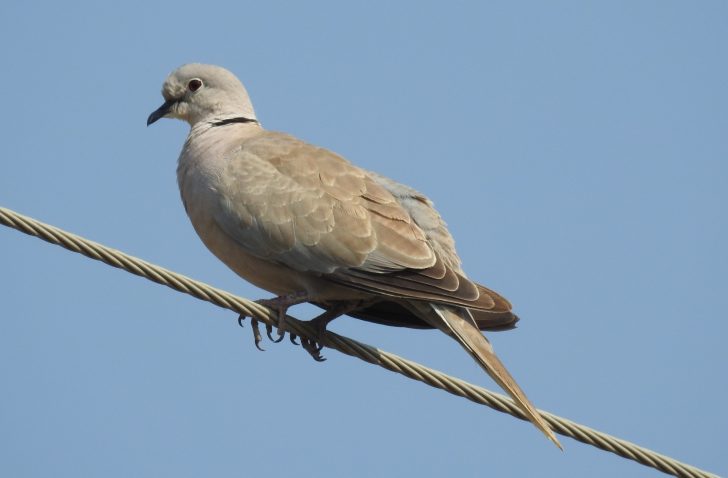
Woodpigeon
Common woodpigeon by David Farrow.
Like the collared dove, the woodpigeon repeats a series of notes over and over and over. My favourite mnemonic for this song is ‘Take twooo cows, Susan’.
Unlike most other birds that you might hear or see at the moment, the woodpigeon has been known to lay eggs and bring up its chicks at any time of year! But they’ll usually nest between April and October. These are large, stocky grey birds with white wing patches.
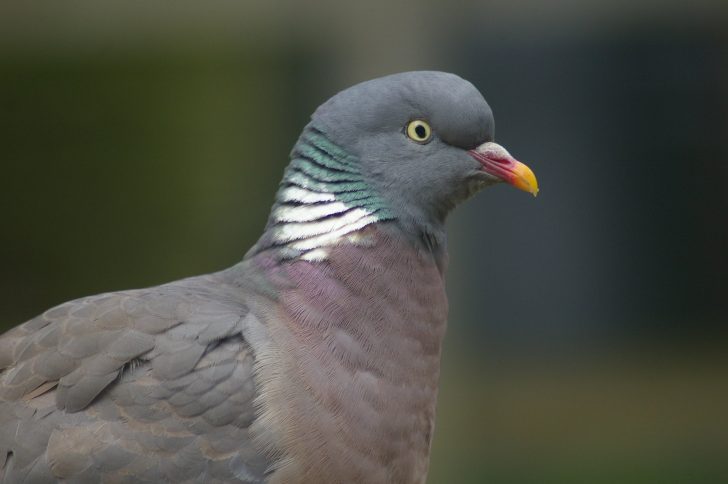
Blue tit
Eurasian blue tit by David Bissett.
A light and pleasant twittering from the treetops announces the presence of the blue tit with its bright blue and yellow plumage. The female will lay her eggs in May before the challenge of raising up to 12 or even 16 chicks begins. Each chick will eat up to 100 caterpillars a day!
They often nest in bird boxes that people have put up for them, so you can get great views of these hardworking little birds.
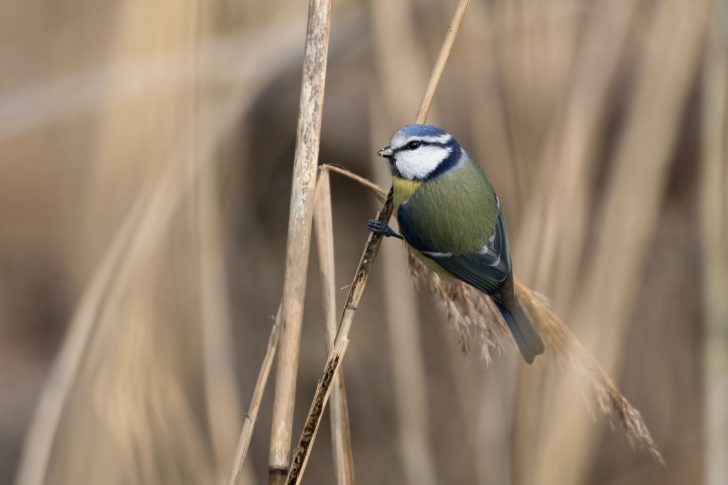
Great tit
Great tit by Michael Jezierski.
Great tits start singing early in the year and have an easily recognised two-note ‘tea-cher, tea-cher’ song. It sounds a bit like a squeaky gate or bicycle pump!
Like blue tits, they readily use nest boxes, and this has made them easy to study. Researchers from Oxford University have been learning about great tits in a long-running project at Wytham Woods, Oxfordshire, since the 1930s!
Great tits have a back and white head, and a yellow breast with a black line down the middle.
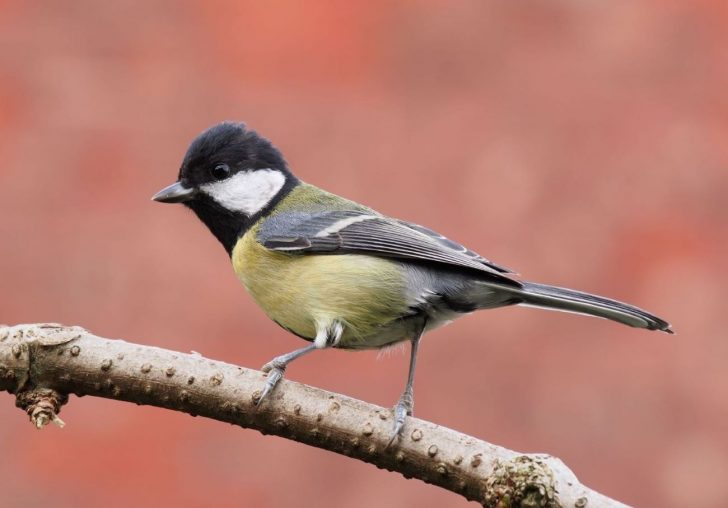
Chaffinch
Common chaffinch by David M.
The chaffinch has a fast cascading song that’s often compared to a bowler in cricket, running up to the crease then hurling the ball. It can perform this up to 3,000 times a day!
This finch is one of the most abundant birds and is often seen in gardens, although like many of the birds we see in urban and suburban areas chaffinches originally lived in woodland. Male chaffinches have blue-grey heads and pink breasts, and the females are brown with black and white markings.
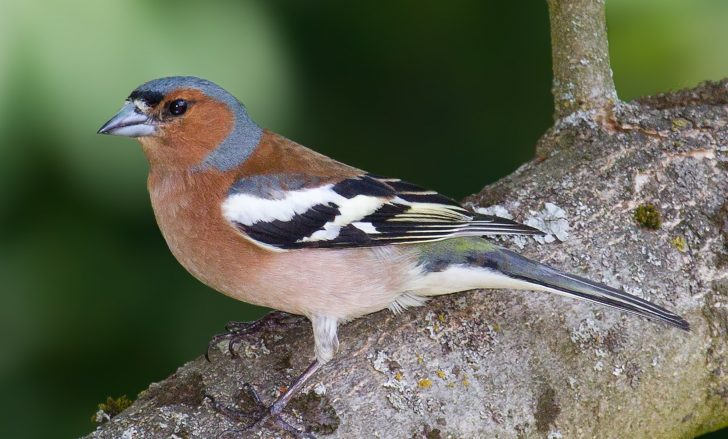
Song thrush
Song thrush by David M.
Song thrushes have a wide vocabulary of around 100 series of notes, or ‘phrases’, which they repeat three or four times when they’re singing.
They’re less common than they once were, due to the loss of tall, thick hedgerows to nest in and disappearance of wet grassy areas where they can find their favourite foods: slugs, snails and worms. These birds have brown backs and spotted breasts.
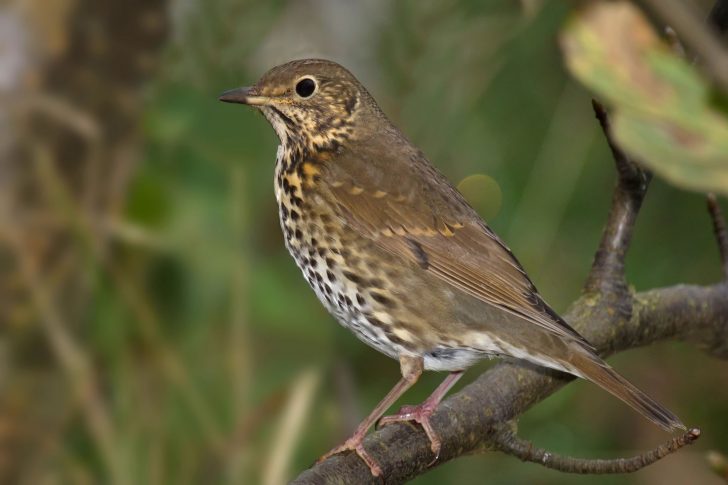
Dunnock
Dunnock by Tony Whitehead.
The dunnock’s song is a pleasant high-pitched reedy warble. An old name for this bird is ‘hedge sparrow’, although they’re not actually part of the sparrow family. They’re part of a group of birds called ‘accentors’ that are found across Asia and Europe.
Where the house sparrow has a chunky beak for crunching seeds, the grey and brown dunnock has a thin pointy one for catching insects.
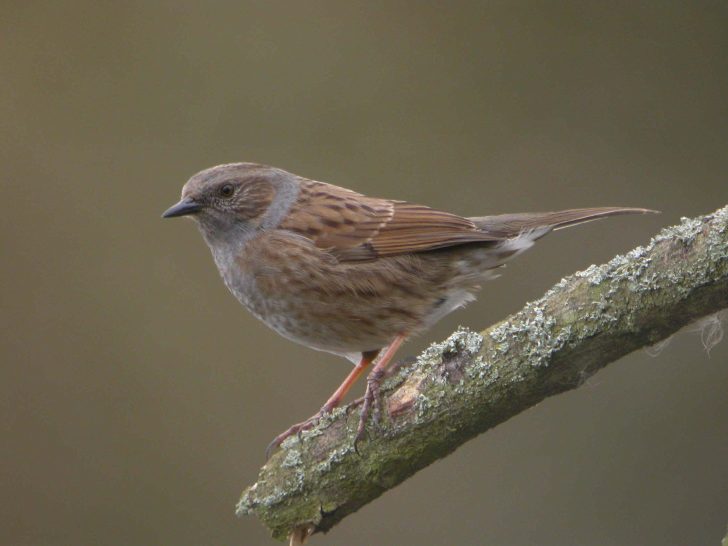
There are many more that you might hear from your home, and hopefully you’ll get to see them too. Don’t worry if you can’t identify every bird from its song. Just sit back and enjoy the music!






